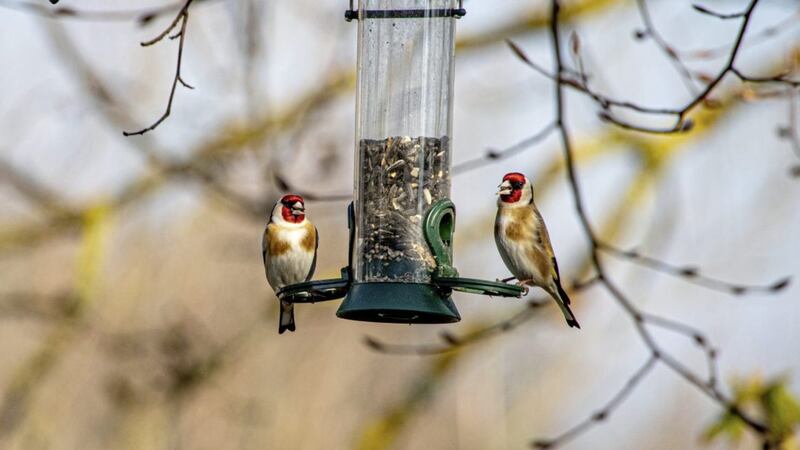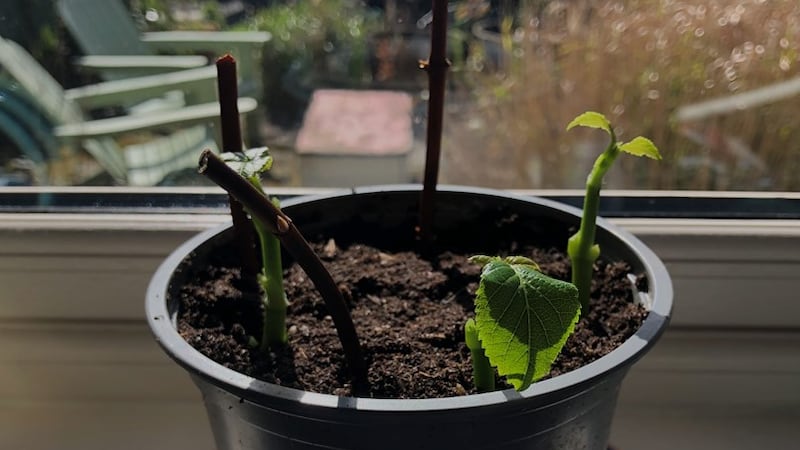ALONG with hundreds of others, I participated in the RSPB’s Big Garden Birdwatch on the weekend of Jan 29-31. This annual event encourages members of the public to become ‘citizen scientists’ by observing birds feeding in their gardens over the course of one hour, with the collated data published later and the top 10 most frequently seen species, identified.
The figures from this public birdwatch have helped show patterns of decline for some birds and increases for others. Drilling down into the data has also helped explain some of the changes, for example, how certain food types attract different species.
Thus, I was surprised, that in the weeks prior to and during my hour of observing, there were few visiting goldfinches, even though their preferred nyjer seed and sunflower hearts were on offer.
These handsome finches have been consistently in the top 10 in recent years and a regular visitor to my feeders in the past, but only two appeared during my observation shift. The striking bird, with its scarlet-red face, white cheeks, black head, and bright yellow wing bars, has the common Irish name, Lasair choille, ‘flame of the woods’.
Other Irish names also refer to the gold or yellow on the wing like Buidheán óir, gold yellow bird, a Donegal used term noted by Anderson, in Birds of Ireland; Facts, Folklore & History (2008).
Favourite foods include thistle and teasel seed, giving its scientific name Carduelis carduelis from the Latin ‘Carduus’ a genus of thistles. The bird’s liking for thistles is mentioned by ever-observant John Clare in The Redcap where he wrote, ‘In early spring its voice is heard/While searching thistles brown and bare.’
The goldfinch was an important subject in the paintings of the late medieval and renaissance artists when the bird featured in many pictures of the Madonna and baby Jesus. Famous among them is Raphael’s Madonna del Cardellino (Madonna of the Goldfinch) 1505-1506, which features Mary, the child Jesus and John the Baptist holding a goldfinch in his hand.
As with many images from the period, the bird represents the crucifixion and resurrection, from the belief it acquired its red face marking from drops of blood while removing thorns from Christ’s crown.
Also of interest this weekend is the Goldfinch’s place in the lore of St Valentine’s day, a date which English poet Geoffrey Chaucer helped transform from being simply a religious feast day in honour of the saint’s supposed beheading on Feb 14, around 270 AD, to a day when romance might flourish. He wrote in his poem Parlement of Foules (1382), ‘For this was on seynt Valentynes day, / Whan every foul (fowl) cometh ther to chese his make’, (choose his mate).
It’s presumed Chaucer’s linking the Catholic martyr Valentine with courtship is because mid-February is the time in the natural world when many birds begin to pair for the mating season and establish breeding territories.
Legend tells us that on the 14th day of this month, the first bird a girl sees could give a clue as to the man she might marry. If it was a woodpecker, she would not marry at all; a robin, he would be a sailor; a sparrow, he would be a poor man; a crossbill, an argumentative man; if a goldfinch however, she would marry a millionaire.
As February advances, pushed on by an east wind baring its teeth, I hope to see more goldfinches around my feeders before the full onset of spring takes them elsewhere. By then, I trust I’ll also have heard the song of our first summer migrant, the chiffchaff.








